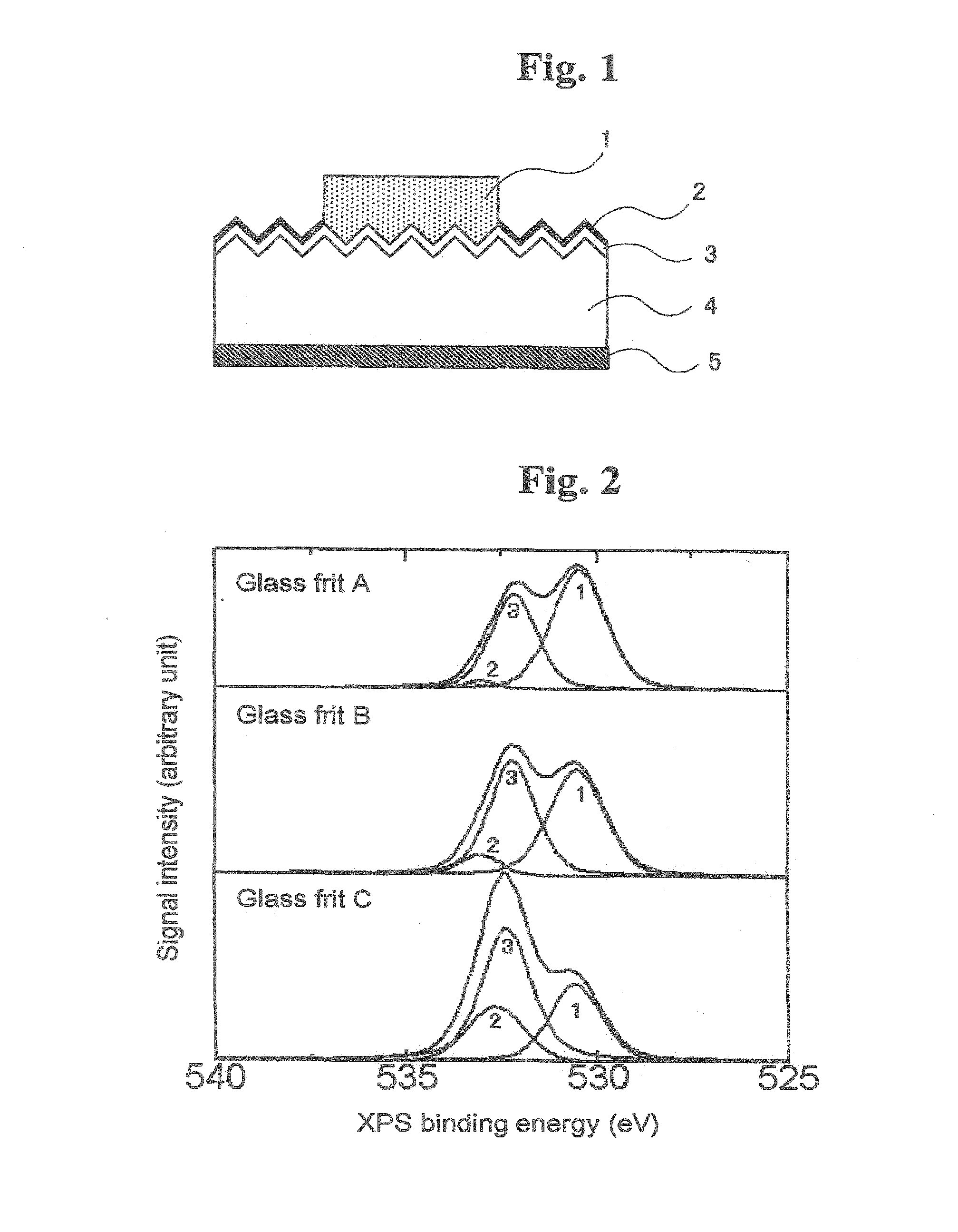Process for producing conductive pastes for forming solar cell electrodes
a technology of solar cell electrodes and conductive pastes, which is applied in the direction of electrically-conductive paints, sustainable manufacturing/processing, and final product manufacturing, etc., can solve the problems of increased development cost, poor solar cell characteristics, and insufficient guidelines in the art. , to achieve the effect of good solar cell characteristics
- Summary
- Abstract
- Description
- Claims
- Application Information
AI Technical Summary
Benefits of technology
Problems solved by technology
Method used
Image
Examples
examples
[0101]Hereinbelow, the present invention will be described in detail by presenting examples without limiting the scope of the invention to such examples.
Materials of Conductive Pastes and Proportions in Preparation
[0102]Compositions of conductive pastes used for the production of solar cells in examples and comparative examples are as follows.
[0103]Conductive powder: Spherical Ag particles (100 parts by weight) were used which had a BET value of 0.6 m2 / g and a median particle diameter D50 of 1.4 μm.
[0104]Glass frits: Glass frits A to H with the compositions shown in Table 1, were used. Table 2 shows the amounts of the glass frits added to 100 parts by weight of the conductive powder in the conductive pastes of examples and comparative examples. The median particle diameter D50 of the glass frits was 2 μm.
[0105]Organic binder: Ethylcellulose (1 part by weight) containing 48 to 49.5 wt % of ethoxy was used.
[0106]Solvent: Butylcarbitol (11 parts by weight) was used.
[0107]The above mate...
PUM
| Property | Measurement | Unit |
|---|---|---|
| binding energies | aaaaa | aaaaa |
| binding energies | aaaaa | aaaaa |
| particle sizes | aaaaa | aaaaa |
Abstract
Description
Claims
Application Information
 Login to View More
Login to View More - R&D
- Intellectual Property
- Life Sciences
- Materials
- Tech Scout
- Unparalleled Data Quality
- Higher Quality Content
- 60% Fewer Hallucinations
Browse by: Latest US Patents, China's latest patents, Technical Efficacy Thesaurus, Application Domain, Technology Topic, Popular Technical Reports.
© 2025 PatSnap. All rights reserved.Legal|Privacy policy|Modern Slavery Act Transparency Statement|Sitemap|About US| Contact US: help@patsnap.com



